 |
Langley Research CenterTurbulence Modeling Resource |
Jump to: SA Results, SA-RC Results, SSTm Results, SSG/LRR-RSM-w2012 Results, K-kL-MEAH2015m Results
Return to: 2D NASA Wall-Mounted Hump Separated Flow Case Intro Page
Return to: Turbulence Modeling Resource Home Page
2D NASA Wall-Mounted Hump Separated Flow Validation Case (no plenum)
BSLm Model Results
Link to BSLm equations
Note this case can also be run on grids WITH a plenum; however, this has not been done yet.
Previously on this page the results were reported as BSL solutions, but more properly they should be referred
to as BSLm. Essentially no difference is expected.
Note that thorough
grid studies were not performed for validation cases such as this one.
Some effort was made to ensure reasonable grid resolutions, but there may still be
small noticeable discretization errors. Therefore, these validation results shown should be considered
representative, but not "truth."
The plots shown compare the BSLm results from two independent
CFD codes: CFL3D and FUN3D, along with experimental data, using grids with no plenum included.
The CFD codes predict the flow separation to occur near x/c = 0.656 and reattachment near x/c = 1.16-1.18
(in experiment these were 0.665 and 1.1, respectively).
Both CFL3D and FUN3D used freestream turbulence intensity=0.077% and freestream turbulent viscosity (relative to laminar)=0.009
(additional details can be found in the CFL3D User's Manual, Appendix H).
Please read note 5 on Notes on running CFD page.
These results are from the second-finest grid (817 x 217).
Both codes gave results that were reasonably close on this grid.
Note that these are compressible code results at "essentially incompressible" conditions of M=0.1.
There may be a very small influence of compressibility.
Also note that the CFD's reference pressure is different from the experiment (to attain the same reference dynamic pressure);
so a shift is necessary to align the Cp levels.
The data files from CFL3D are given here:
nasahump_cfl3d_cp_noplenum_bsl.dat,
nasahump_cfl3d_cf_noplenum_bsl.dat,
nasahump_cfl3d_vel_noplenum_bsl.dat,
nasahump_cfl3d_uv_noplenum_bsl.dat,
(Note: the profiles have been interpolated using Tecplot software onto pre-set points, that may or may
not correspond to the actual grid points or grid cells used in the computation.)
A typical CFL3D input file is:
nasahump_cfl3d_typical_noplenum_bsl.inp.
A typical FUN3D input file is:
fun3d.nml_typical_hump_bsl.
Note that this model is currently assigned
MRR Level 2 for the purposes of this website.
This is because at this time the TMBWG has results for this model
from two different codes from the same home organization.
The results on this page are therefore not necessarily
reliable until additional independent code(s) can be used to verify the model implementation.
Jump to: SA Results,
SA-RC Results,
SSTm Results,
SSG/LRR-RSM-w2012 Results,
K-kL-MEAH2015m Results Return to: 2D NASA Wall-Mounted Hump Separated Flow Case Intro Page Return to: Turbulence Modeling Resource Home Page
Responsible NASA Official:
Ethan Vogel
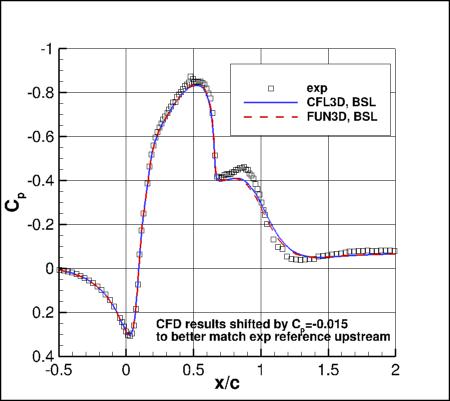
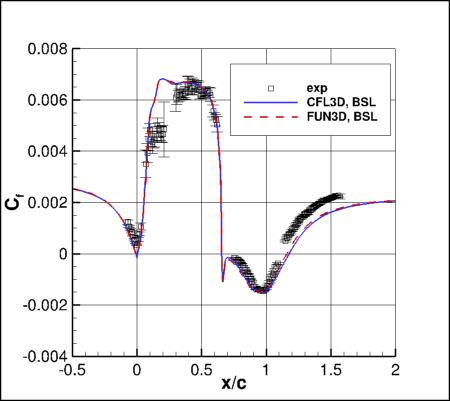

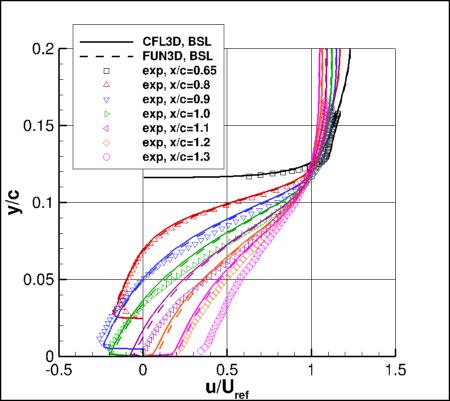
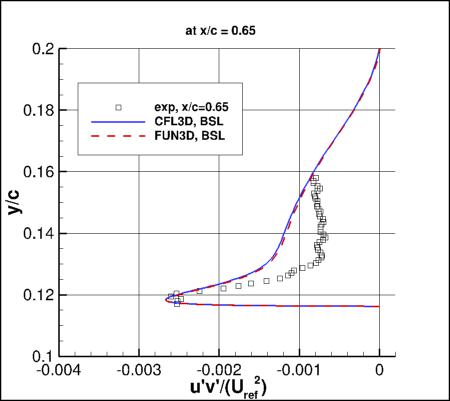
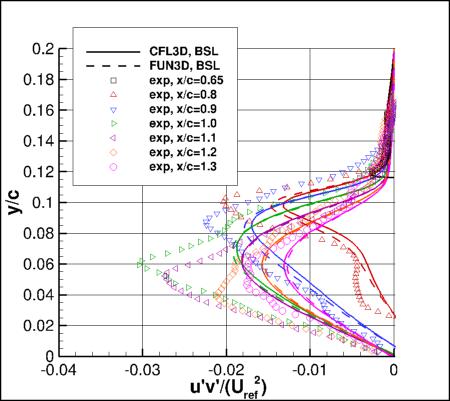
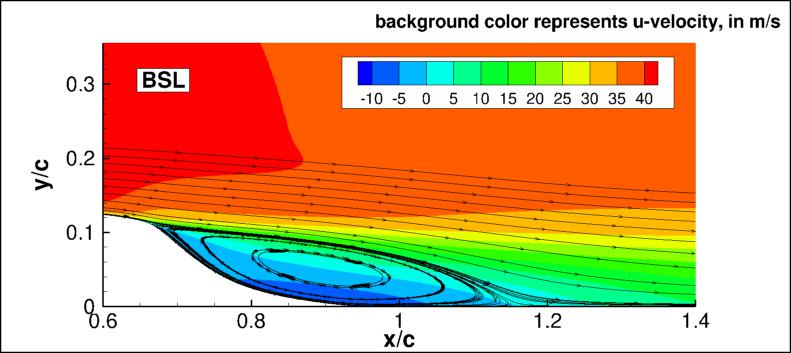
Page Curator:
Clark Pederson
Last Updated: 03/17/2025